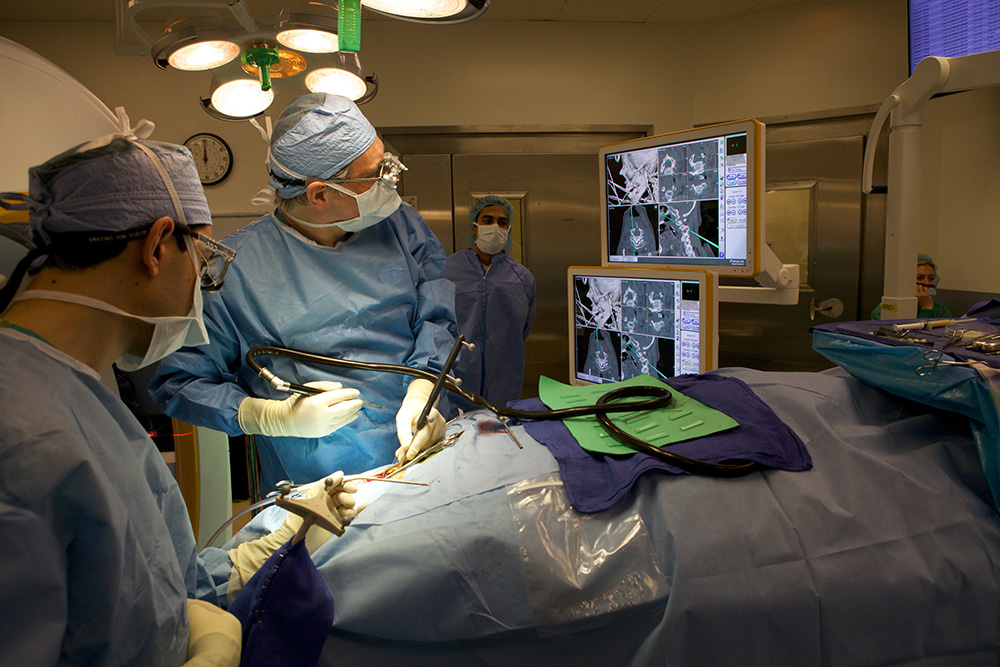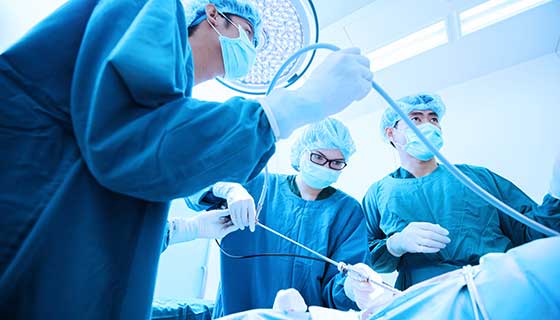Networking with the Best Spine Surgeons in St Louis MO for Comprehensive Treatment
Networking with the Best Spine Surgeons in St Louis MO for Comprehensive Treatment
Blog Article
A Summary of Spine Conditions That Commonly Result in Surgical Therapies
Back conditions such as herniated discs, back stenosis, and degenerative disc illness regularly require surgical interventions when conservative treatments stop working to alleviate relentless signs. These problems not only bring about significant discomfort yet can likewise drastically hinder day-to-day performance and total lifestyle. Recognizing the subtleties of each condition and the equivalent medical alternatives, such as discectomy or spine fusion, is essential for effective administration. As we explore these problems additionally, it becomes noticeable that the decision-making process bordering medical therapy is multifaceted and warrants mindful consideration.
Herniated Discs
Although numerous people with herniated discs may find relief with conservative therapies, surgical procedure becomes an essential factor to consider when symptoms continue or intensify - best spine surgeons in st louis mo. A herniated disc takes place when the soft inner gel of a spine disc extends via its outer layer, possibly leading and compressing nearby nerves to pain, tingling, or weakness in the extremities
Conventional administration generally includes physical therapy, discomfort medications, and corticosteroid shots, which aim to reduce swelling and boost feature. Nonetheless, in instances where these techniques fail to ease devastating signs, surgical alternatives may be discovered.
The most usual procedure for herniated discs is a discectomy, which entails the elimination of the herniated part of the disc to soothe pressure on the impacted nerve origin. In much more severe cases, back combination might be required to stabilize the affected vertebrae.
Patients are suggested to review the prospective risks and advantages of surgical procedure with their doctor to make an informed choice. Inevitably, the goal of any type of surgical treatment is to bring back function, minimize discomfort, and improve total lifestyle for people struggling with herniated discs.
Spine Constriction
Spine stenosis occurs when the spaces within the spinal column narrow, resulting in enhanced pressure on the spinal cord and nerves. This condition can create in different regions of the back, consisting of the back and cervical areas, typically because of age-related adjustments, such as degenerative disc illness, joint inflammation, or enlarging of ligaments.
Individuals with back stenosis might present with symptoms that include pain, feeling numb, prickling, or weak point, mostly in the arms or legs. These signs can be exacerbated by tasks that include standing or walking, often leading people to seek relief with conservative treatments like physical therapy, medicines, or epidural steroid injections.
Nonetheless, when these non-surgical treatments stop working to give adequate alleviation, surgical choices might be considered. Common medical procedures for spine stenosis consist of laminectomy, which includes the removal of component of the vertebra to alleviate stress, and spine fusion, which supports the afflicted location.
Spondylolisthesis
Spondylolisthesis takes place when one vertebra slides forward over an additional, leading to misalignment of the spinal column. This condition can arise from different aspects, including genetic flaws, injury, or degenerative changes in the spinal column. It is most generally observed in the back area, particularly at the L4-L5 and L5-S1 degrees.

When non-surgical approaches fall short to soothe signs and symptoms or when significant nerve compression is present, surgical treatment may be warranted. Surgical choices can include spinal fusion or decompression treatments, aimed at recovering alignment and relieving neurological symptoms.
Degenerative Disc Illness

Clients with DDD commonly experience pain that may emit to the arms or legs, depending on the affected area of the back. content The condition can be identified via a combination of clinical evaluation, imaging studies, and individual background. Treatment choices typically begin with traditional steps, including physical therapy, pain administration, and way of living adjustments. When these methods fall short to provide appropriate relief, surgical interventions may be thought about.
Surgical choices for DDD might consist of spine blend or synthetic disc substitute, focused on maintaining the impacted segment and alleviating discomfort (best spine surgeons in st louis mo). Eventually, the choice of therapy is individualized, considering the intensity of the condition, person wellness, and way of life elements
Back Tumors

Back growths can arise from different elements, including hereditary proneness, ecological influences, and pre-existing clinical conditions. Clients may offer with an array of symptoms, consisting of local pain, neurological shortages, weakness, or adjustments in bowel and bladder feature, depending on the growth's size and location.
Medical diagnosis normally entails imaging studies such as MRI or CT checks, which aid delineate the growth's attributes and effect on bordering structures. In analyzing therapy options, the lump's grade, kind, and location are essential considerations. Surgical intervention may be necessitated to relieve signs, obtain a biopsy, or eliminate the tumor totally. The goal of surgical treatment is often to decompress neural elements and support the spinal column. Adjuvant treatments, including radiation or chemotherapy, may likewise be necessary depending upon the growth's nature. Early discovery and treatment are important for enhancing outcomes in clients with spinal lumps.
Final Thought
In recap, back conditions such as herniated discs, spinal stenosis, spondylolisthesis, degenerative disc condition, and spinal tumors regularly demand medical intervention because of their prospective to cause significant discomfort and practical problems. While conventional therapies might provide momentary alleviation, surgical choices come to be crucial when signs and symptoms intensify or continue. Timely medical diagnosis and treatment play a critical function in bring back feature and enhancing the lifestyle for affected individuals, underscoring the importance of extensive spine treatment.

Report this page